A well-lit classroom sets the stage for creativity and effective learning. Harnessing the power of strategic lighting can transform any space into an environment that’s both inspiring and functional. Through thoughtful design, classroom lighting ideas can enhance concentration, boost energy efficiency, and create a positive atmosphere that nurtures student success. With a mix of natural and modern technologies, these ideas offer a range of solutions to address diverse educational needs. Get ready to explore 22 Classroom Lighting Ideas that bring together simplicity, innovation, and a vibrant learning ambiance.

1. Optimize Natural Light

Bright, inviting spaces inspire creativity and focus from the very first glance. Maximizing natural light in classrooms not only cuts down on energy use but also creates a warm, welcoming atmosphere. Large windows and skylights can reduce reliance on artificial lighting during daylight hours, leading to improved visual comfort and better mood regulation. This approach fosters an environment where students feel energized and engaged, making learning a more enjoyable experience. Practical tips include using light-colored walls and unobstructed glass to further enhance brightness.
2. Install Energy-Efficient LED Lights
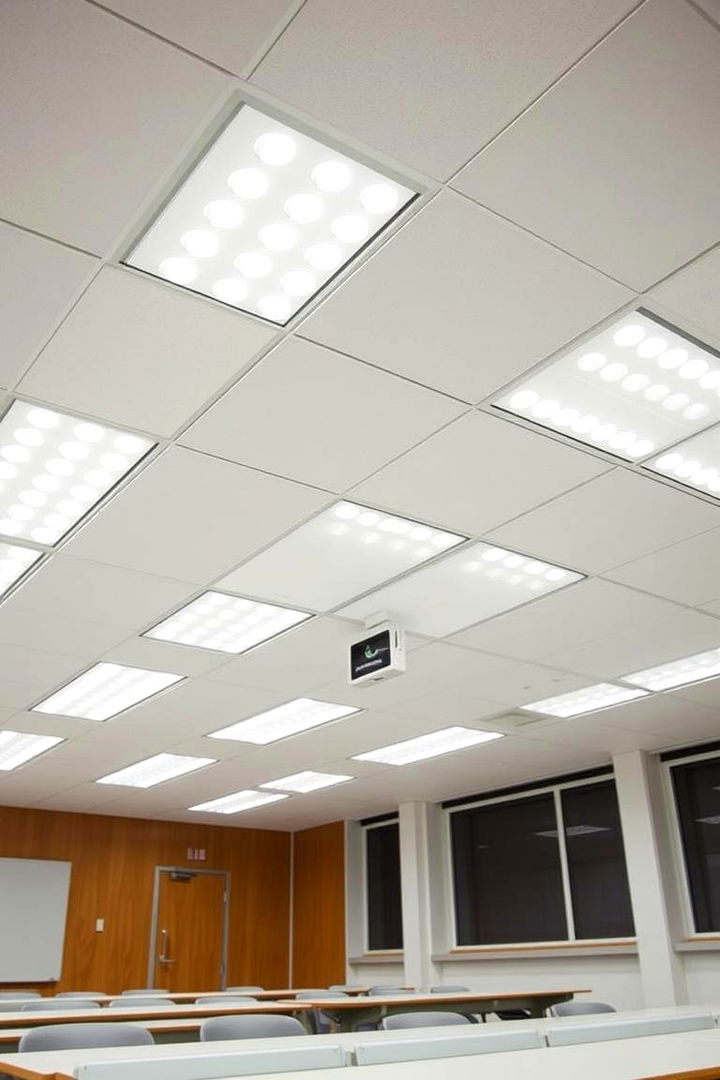
Energized by innovative technology, LED lights offer a brilliant alternative for classroom illumination. Installing energy-efficient LED fixtures reduces electricity costs while providing a consistent, flicker-free light that minimizes eye strain. Their longevity and low maintenance requirements make them ideal for busy educational settings. Beyond saving energy, these lights enhance the ambiance, ensuring that every corner of the classroom is well-lit. By choosing adjustable, high-quality LED fixtures, educators can create a dynamic learning atmosphere that balances practicality with visual appeal.
3. Incorporate Ambient Lighting Elements
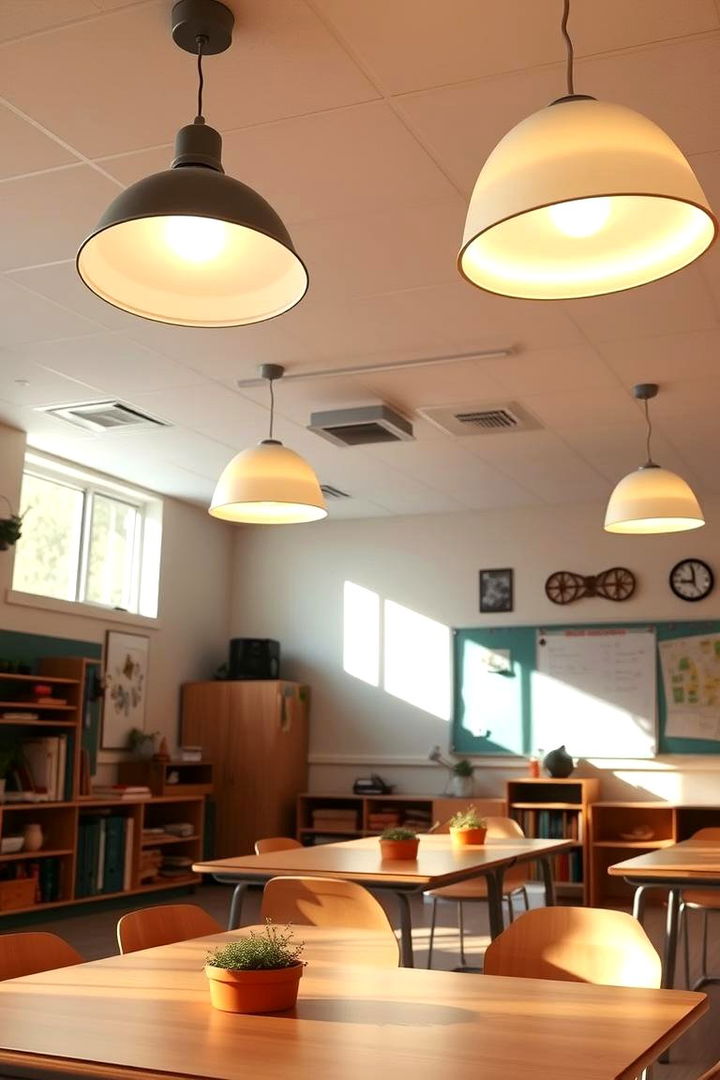
Soft and unobtrusive, ambient lighting can set a calming tone that bolsters overall classroom well-being. By introducing diffused light sources around the room, teachers can create a harmonious environment that supports both collaborative projects and focused study sessions. Carefully placed fixtures lead to an even dispersion of light, reducing harsh shadows and glare. Ambient lighting complements task-specific sources, ensuring every student experiences a consistently comfortable visual field. This design invites creativity and minimizes distractions, making it easier for students to stay engaged and motivated throughout their lessons.
4. Utilize Task Lighting for Reading Areas
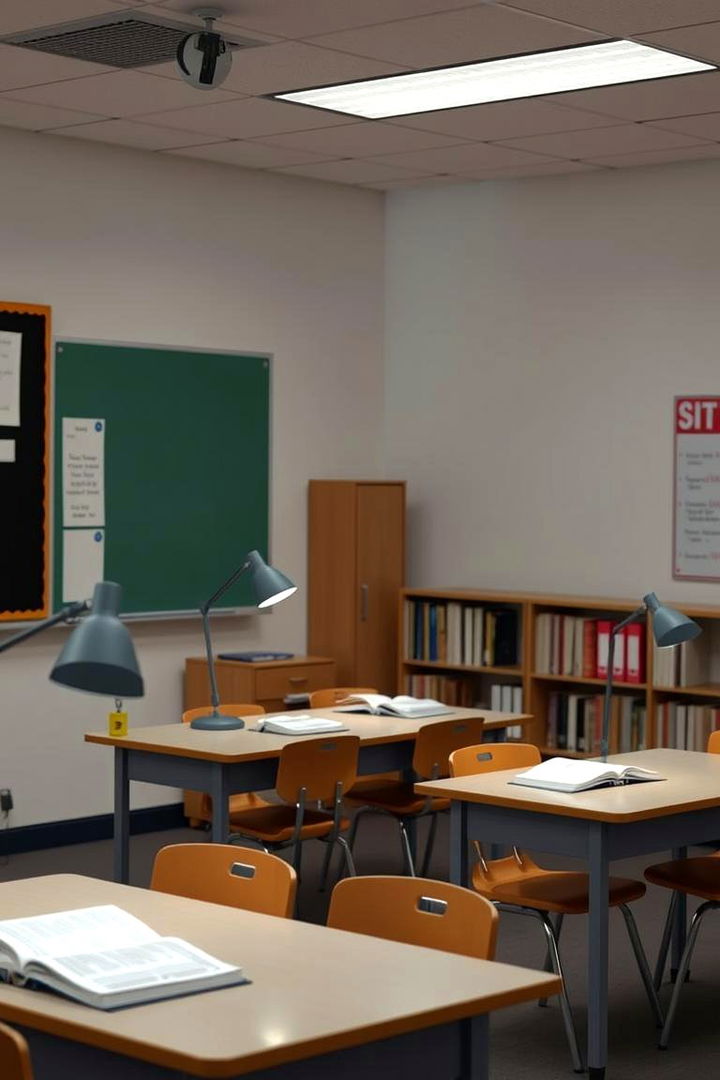
Have you ever noticed how focused light can transform a space? Task lighting specifically designed for reading corners creates a dedicated zone for studying and writing, ensuring that details are clearly visible. Adjustable desk lamps or wall-mounted fixtures allow each student to control the intensity and direction of light, reducing eye fatigue during long hours of study. Such targeted illumination enhances concentration and improves overall learning efficiency. By integrating task lighting, classrooms not only foster individual engagement but also support a wide range of learning activities without compromising on comfort.
5. Experiment with Cool and Warm Color Temperatures
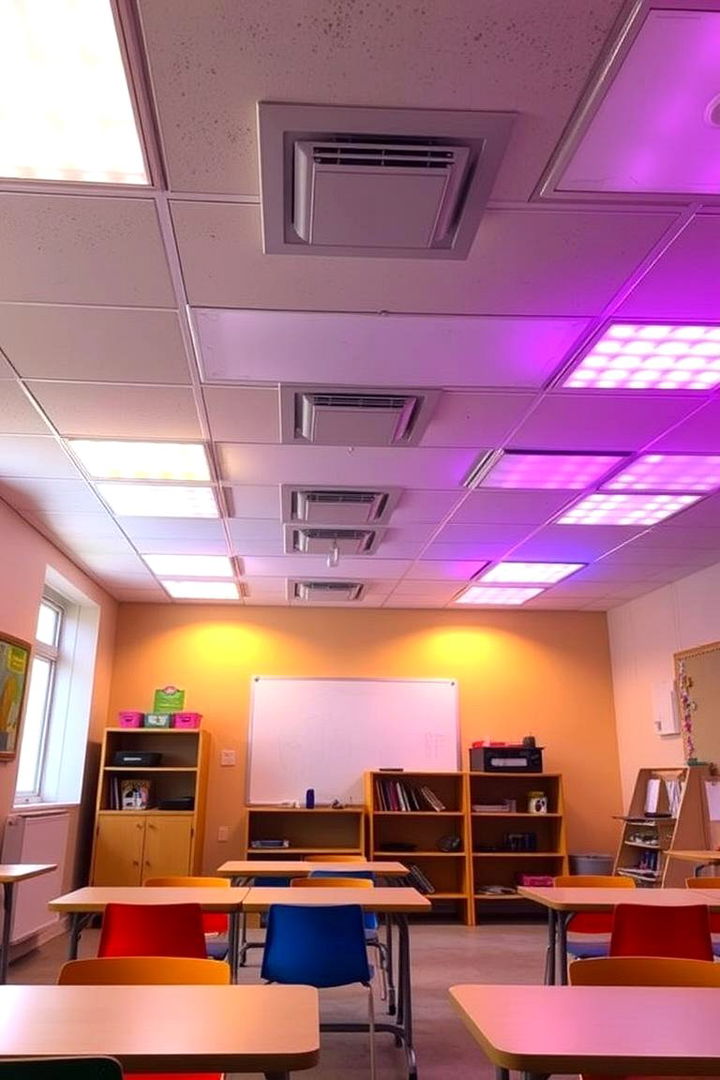
Interestingly, the mood of a classroom can be shaped by its lighting temperature. Experimenting with cool and warm color tones allows educators to tailor the atmosphere to specific activities. Cool hues are known to stimulate concentration, making them ideal for natural study sessions, while warm tones foster a relaxed ambiance suited for creative projects and discussions. By offering adjustable lighting systems, classrooms can effortlessly shift between energetic and calm environments as the day progresses. These choices not only improve productivity but also engage students by appealing to their sensory comfort zones.
6. Create Layered Lighting Designs
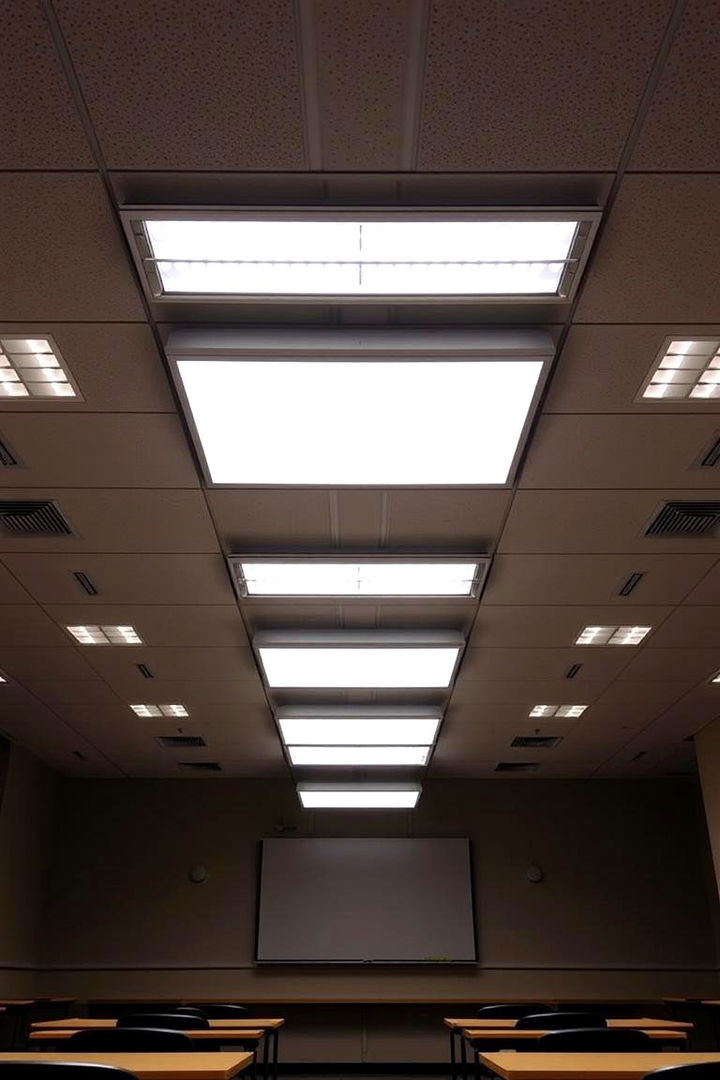
Layered lighting designs bring a sophisticated balance to classroom environments. Combining ambient, task, and accent lighting creates multiple depth levels, ensuring all activity zones are well-lit yet visually distinct. This strategic approach enhances both functionality and aesthetics, allowing teachers to adapt the light setup as per lesson requirements. It addresses various needs in one comprehensive system, making learning spaces dynamic and versatile. Layered lighting can be achieved using a mix of overhead fixtures, desk lamps, and wall sconces, resulting in a balanced design that supports diverse teaching styles and student needs.
7. Integrate Smart Lighting Systems
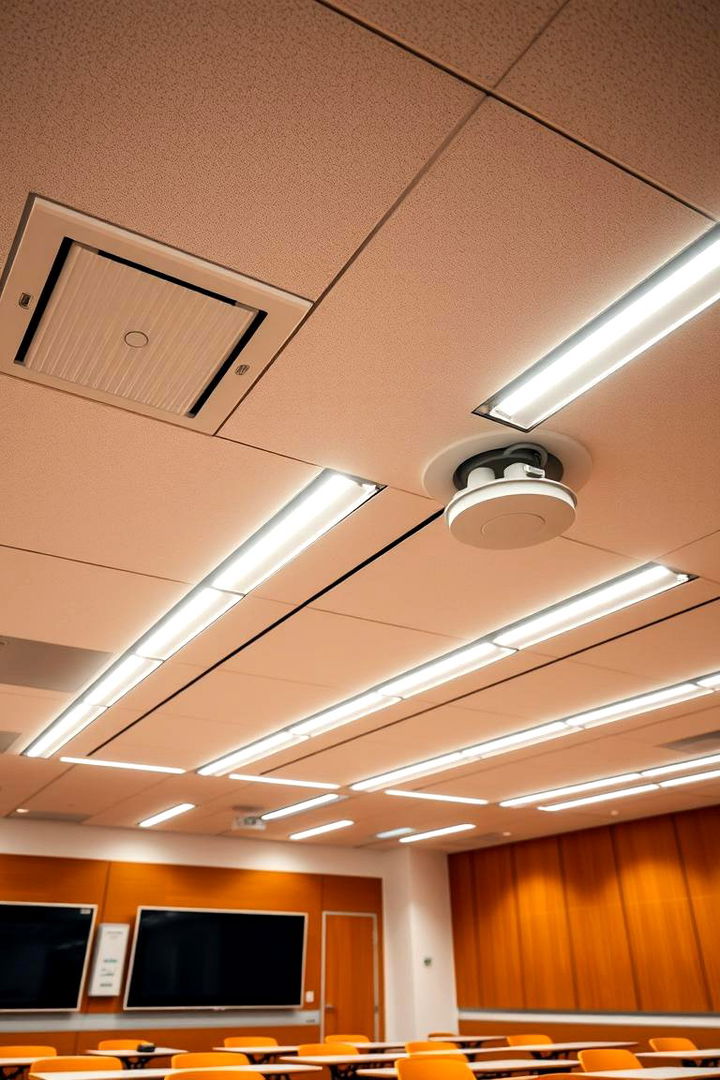
Imagine controlling all lights with a simple tap on a tablet. Smart lighting systems in classrooms bring automation and adaptability to modern education. These systems allow teachers to adjust brightness and color temperature with ease, setting moods that complement different lesson plans. With features like scheduling and sensor activation, such systems maximize energy efficiency and minimize manual adjustments. They not only streamline classroom management but also contribute to a more adaptable and interactive learning environment. Smart lighting clearly represents a futuristic step toward technology-driven educational spaces.
8. Embrace Dynamic Lighting Scenes
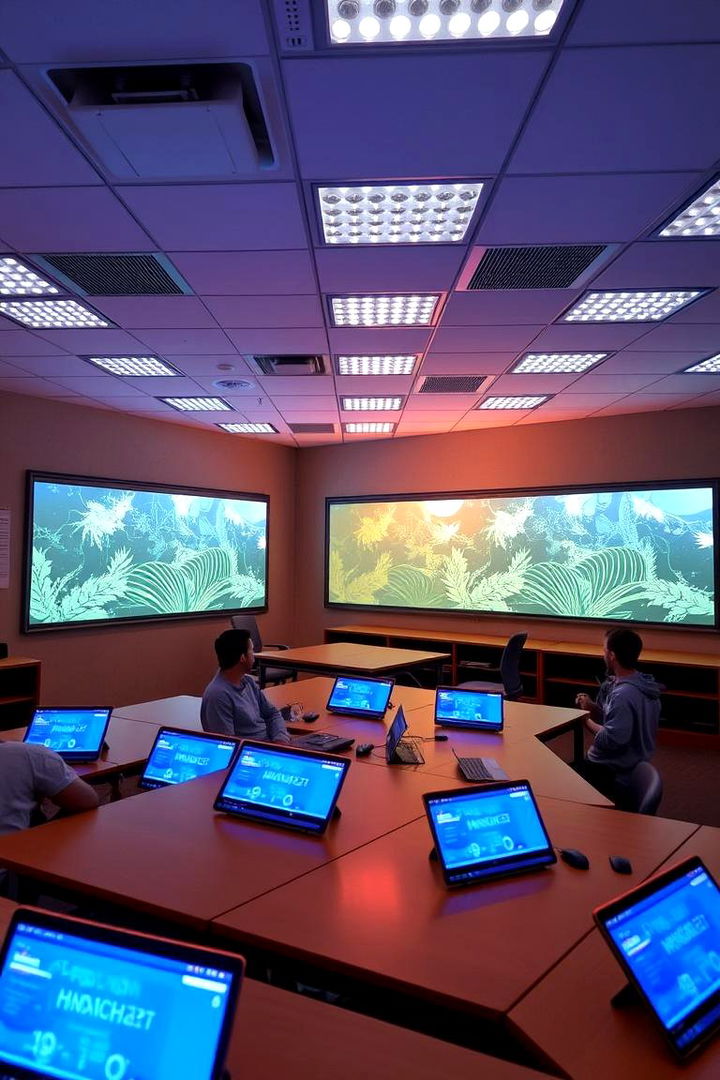
Dynamic lighting scenes inject a sense of energy into the classroom. Switching between different lighting presets during transitions—from group work to quiet study—helps signal changes in activity type and boost student focus. This technique uses programmable lights to create varied atmospheres that reflect the pace and tone of the day. Such versatility supports both collaborative and individual tasks, ensuring the right environment is always set for optimal performance. Dynamic lighting scenes not only captivate attention but also inspire a responsiveness that traditional lighting solutions often lack.
9. Incorporate Adjustable Light Fixtures
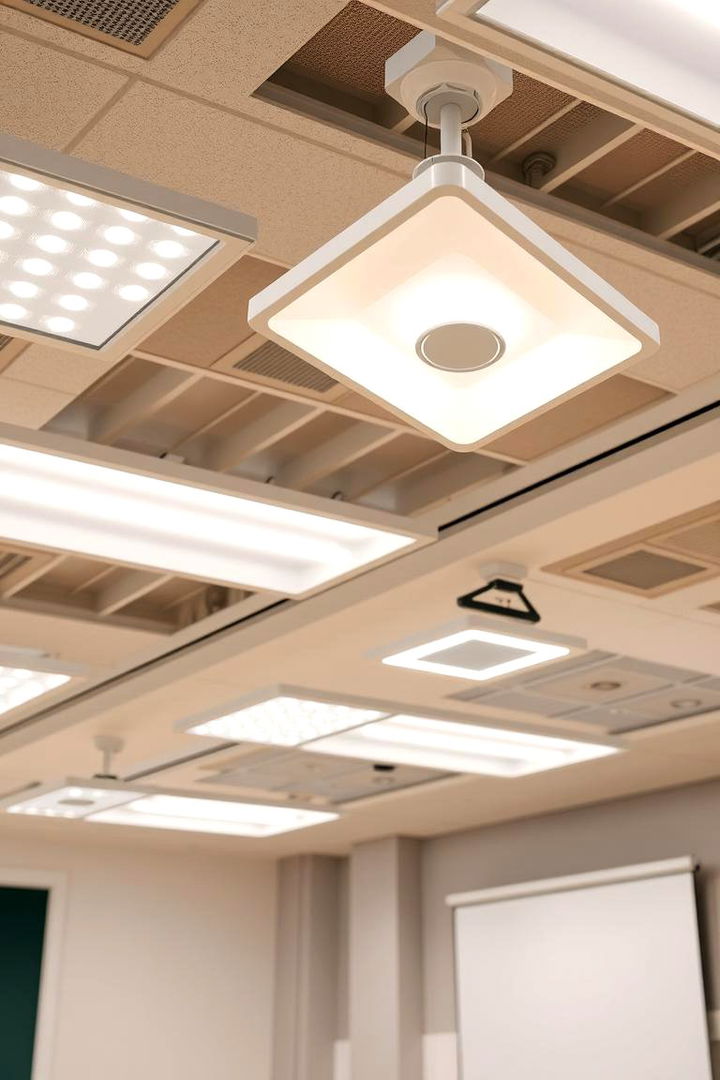
Flexibility in illumination is key to a productive learning space. Adjustable light fixtures allow precise control over brightness and direction, ensuring every nook of the classroom is appropriately lit. These fixtures can be manually or electronically modified to suit evolving teaching styles and natural daylight variations. Their adaptability ensures that both concentrated and general activities receive optimal lighting conditions. This practical innovation supports student comfort and can be easily reconfigured to meet different learning demands, making the classroom adaptable and responsive to everyday needs.
10. Explore Portable Lighting Options
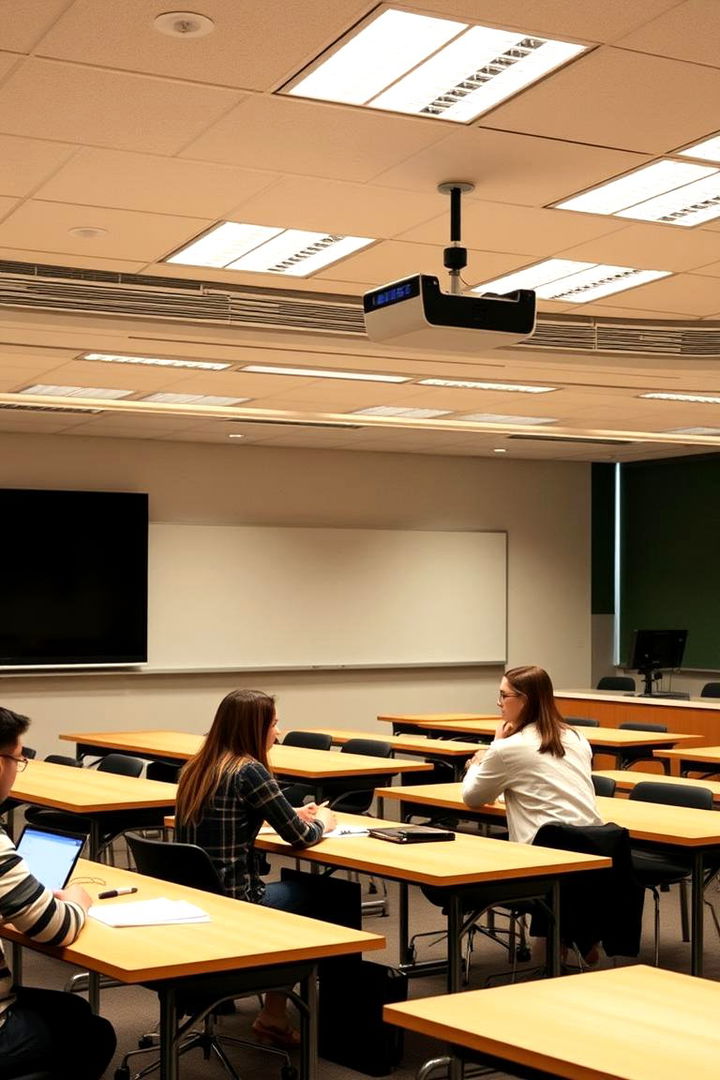
Portable lighting options bring versatility and convenience to educational spaces. Compact, moveable light units can be repositioned to light up different areas during various activities like group reading, project presentations, or interactive sessions. Their lightweight design allows teachers to quickly adjust the setup as needed, providing focused illumination where most required. In addition to being energy-efficient, these portable solutions foster a dynamic classroom environment by offering flexibility that fixed fixtures often lack. They empower educators to effectively respond to the changing demands of an active learning space.
11. Develop Zoned Lighting for Different Activities
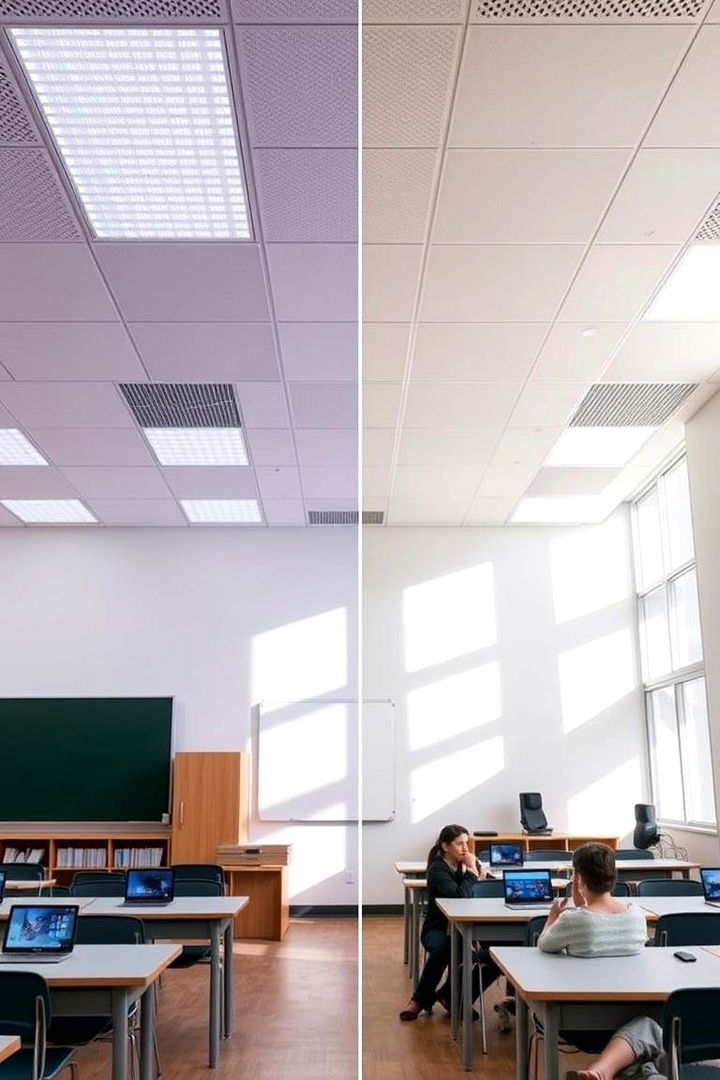
Building zones within a classroom can dramatically improve functionality. Zoned lighting involves creating distinct areas with tailored light intensities for tasks such as reading, discussions, and digital work. This approach enhances focus and minimizes distractions by ensuring each student receives appropriate illumination for specific activities. Adjustable zones help manage the overall brightness and support varied learning methods within the same room. By clearly delineating different zones, teachers can seamlessly transition between subjects while ensuring that every activity is optimally supported through precise lighting design.
12. Use Interactive Lighting Displays
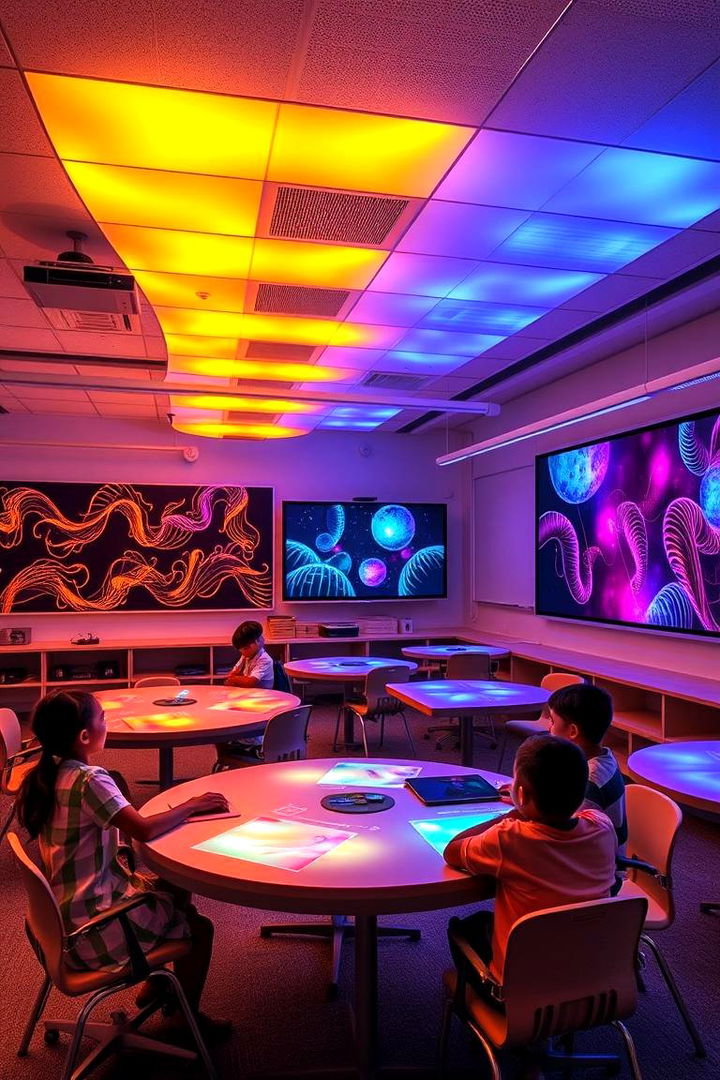
Interactive lighting displays are an exciting way to engage students and stimulate their creativity. Modern classrooms can benefit from displays that change in response to movement or sound, integrating technology with design to create dynamic visuals. These systems can act as both instructional aids and decorative elements, providing real-time feedback and visually reinforcing lesson content. By encouraging participation, interactive displays enhance the learning process, making abstract concepts more tangible. Their innovative nature not only captivates curiosity but also positions the classroom as a cutting-edge space that embraces technological advancements.
13. Install Light-Diffusing Panels
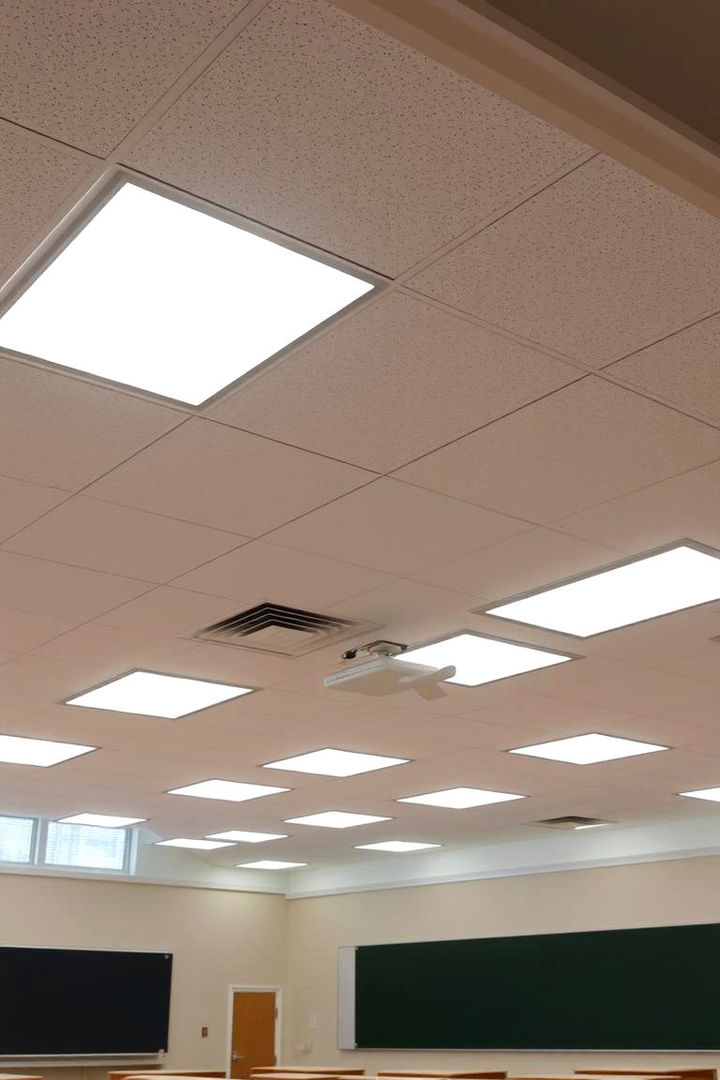
Soft, uniformly distributed light can transform the classroom ambiance, and light-diffusing panels are the secret to achieving this effect. These panels reduce glare and create a gentle illumination that is easy on the eyes, ensuring that students remain comfortable over long study periods. They also enhance visual clarity by eliminating harsh shadows while maintaining a consistent light quality throughout the room. Incorporating light-diffusing panels into classroom design supports better concentration and reduces eye strain, making the space conducive to both intensive lessons and relaxed creative sessions. This practical solution ensures a balanced and inviting environment.
14. Accentuate Architectural Features with Lighting
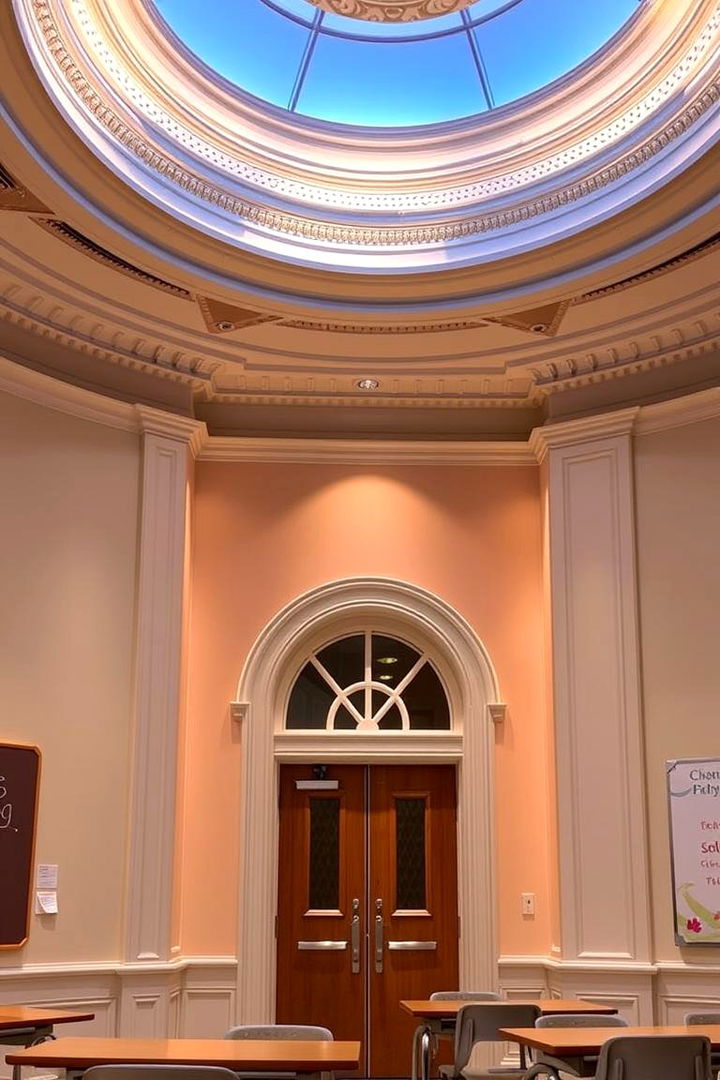
Unique architectural elements deserve to shine, and accent lighting does just that. By strategically placing lights to highlight doorways, windows, or intricate ceiling designs, classrooms can be transformed into visually engaging spaces. This lighting technique not only enhances the aesthetic appeal but also adds depth and dimension to the room. It creates a dramatic yet functional ambiance that subtly directs attention to key features. Effective accent lighting balances artistic expression with practicality, ensuring that the classroom remains both inspiring and efficiently illuminated for day-to-day activities.
15. Customize Brightness Settings for Flexibility

Customizable brightness settings allow teachers to tailor the lighting to specific classroom needs. Adjustable controls empower educators to modify the illumination level as circumstances change throughout the day. For instance, lower brightness levels can induce calm during reading sessions, while higher settings are ideal for interactive projects. This flexibility minimizes energy consumption while ensuring that the lighting remains conducive to various learning tasks. With user-friendly digital interfaces or manual dimmers, customizing brightness becomes a straightforward way to create an adaptable, student-friendly environment that continuously supports both focus and creativity.
16. Use Indirect Lighting Techniques
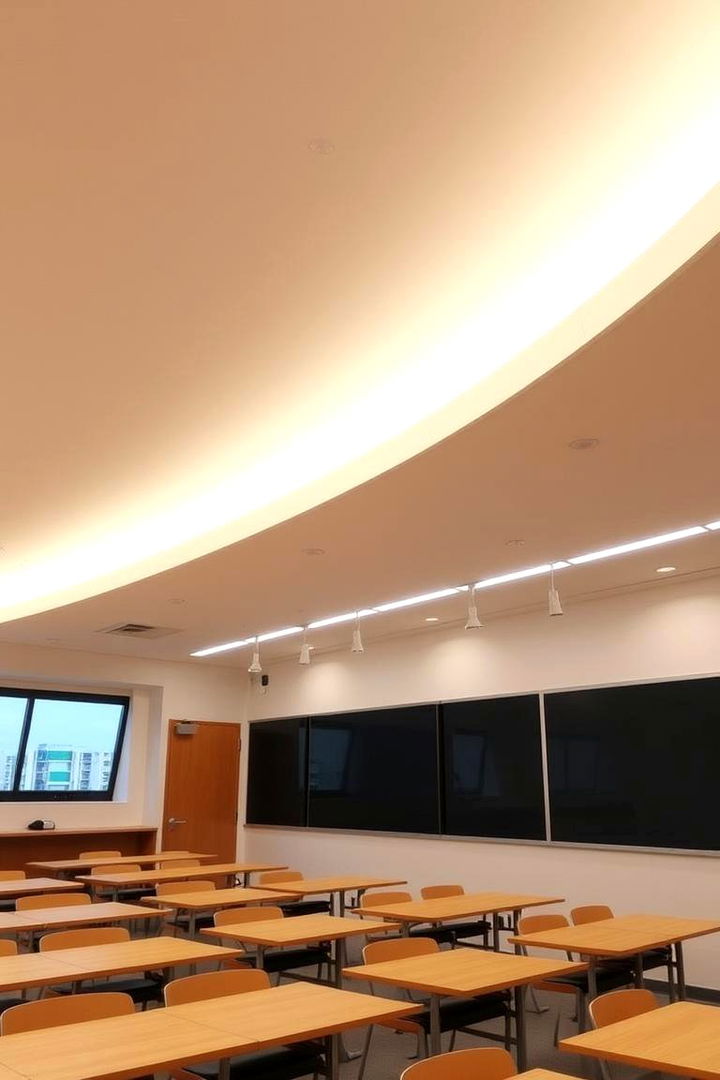
Subtle and elegant, indirect lighting creates a soft glow that envelopes the classroom without the harshness of direct light. Techniques such as cove lighting or hidden LED strips produce a warm, ambient effect that enhances the room’s overall aesthetics. This type of lighting minimizes glare and provides a peaceful backdrop that encourages concentration. Indirect lighting not only accentuates the room’s design but also promotes a relaxed atmosphere, making it ideal for both creative and study sessions. Its balanced distribution of light ensures that students feel comfortable, resulting in a more inviting and effective learning space.
17. Implement Dimmable Lighting Solutions
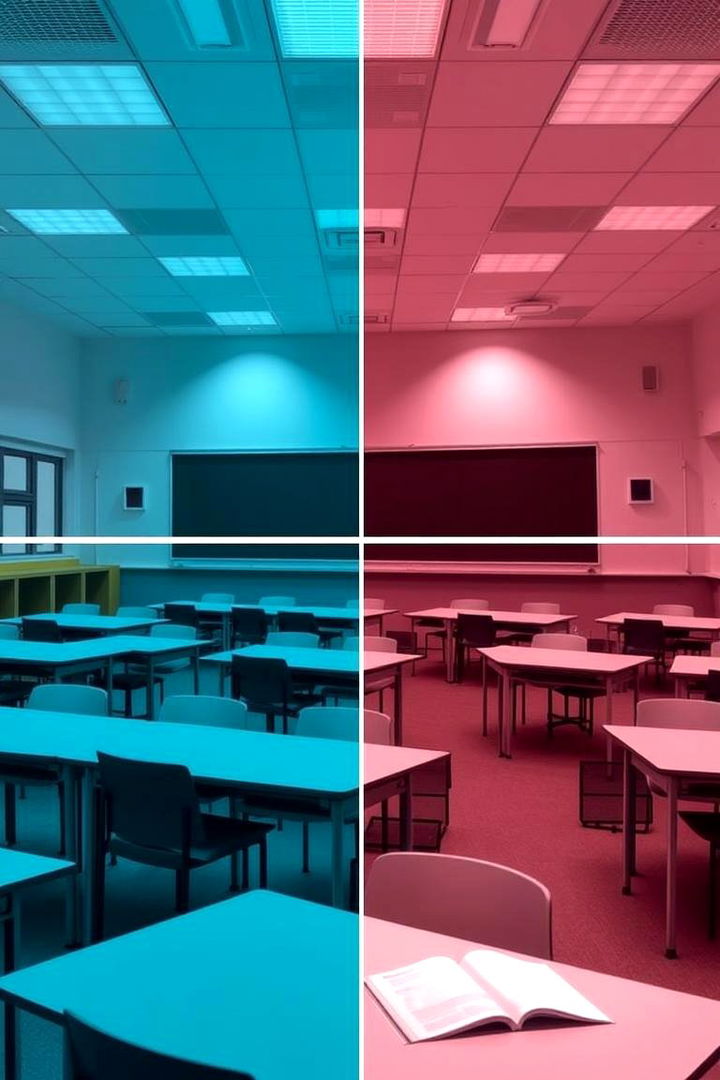
Dimmable lighting solutions empower educators with the control to adapt the classroom’s ambience to the moment’s needs. Fine-tuning the brightness helps to create an environment that is both inviting and conducive to concentration. Whether it’s for a lively discussion or a quiet study period, having the option to dial in the perfect light level can significantly enhance focus and reduce visual fatigue. These solutions also contribute to energy savings by allowing for precise control over power consumption. The flexibility offered by dimmable lights ensures that the space can seamlessly transition through various activities while maintaining optimal comfort.
18. Choose Eco-Friendly Lighting Materials
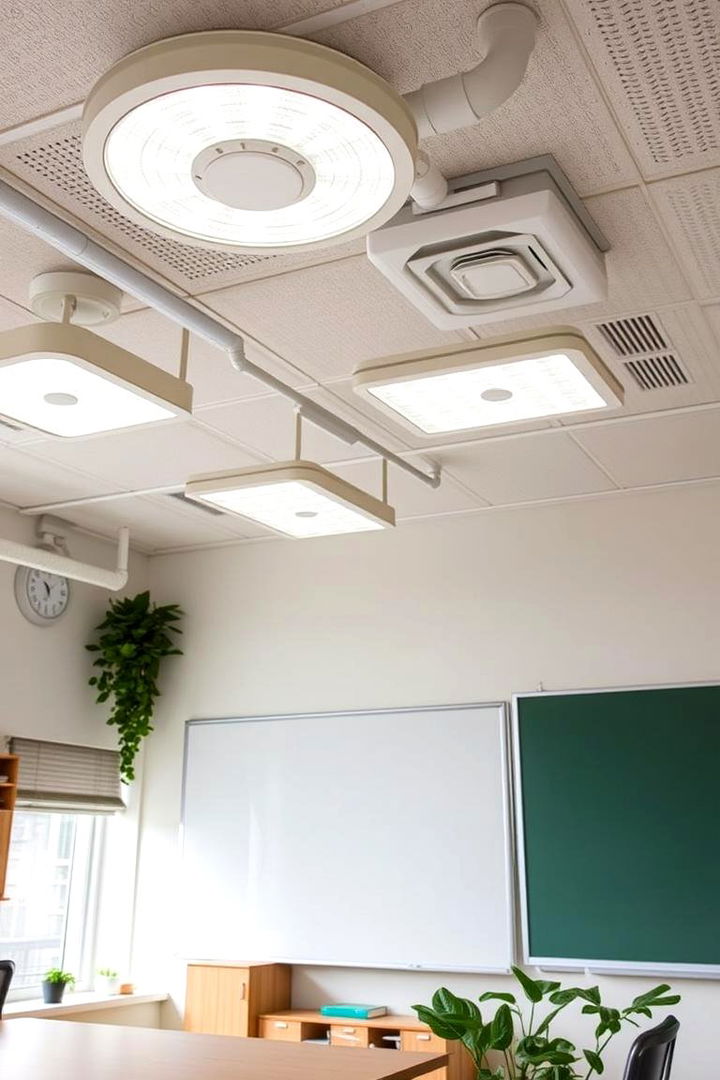
Sustainability matters, and eco-friendly lighting materials offer a responsible choice for modern classrooms. These alternatives utilize recycled or sustainable resources that reduce the environmental footprint while delivering a high-quality illumination experience. Eco-friendly lighting is designed to minimize energy consumption and lower overall carbon emissions. It provides a healthy, safe environment for students while reinforcing an important message about environmental stewardship. Choosing sustainable fixtures and bulbs not only benefits the planet but also helps institutions reduce long-term operational costs and promote an ethos of responsibility and innovation.
19. Integrate Daylight Harvesting Sensors

Efficient energy use goes hand in hand with smart innovations like daylight harvesting sensors. These sensors automatically adjust the classroom’s lighting based on the available natural light. By constantly calibrating the brightness, they ensure a consistent, comfortable environment while maximizing energy efficiency. This technology reduces wasted power and helps maintain optimal illumination levels without manual intervention. Incorporating daylight harvesting sensors not only streamlines operations but also supports a modern, eco-friendly classroom setup that is responsive to varying daylight conditions—all while providing a stable and engaging atmosphere for students.
20. Introduce Localized Spotlighting
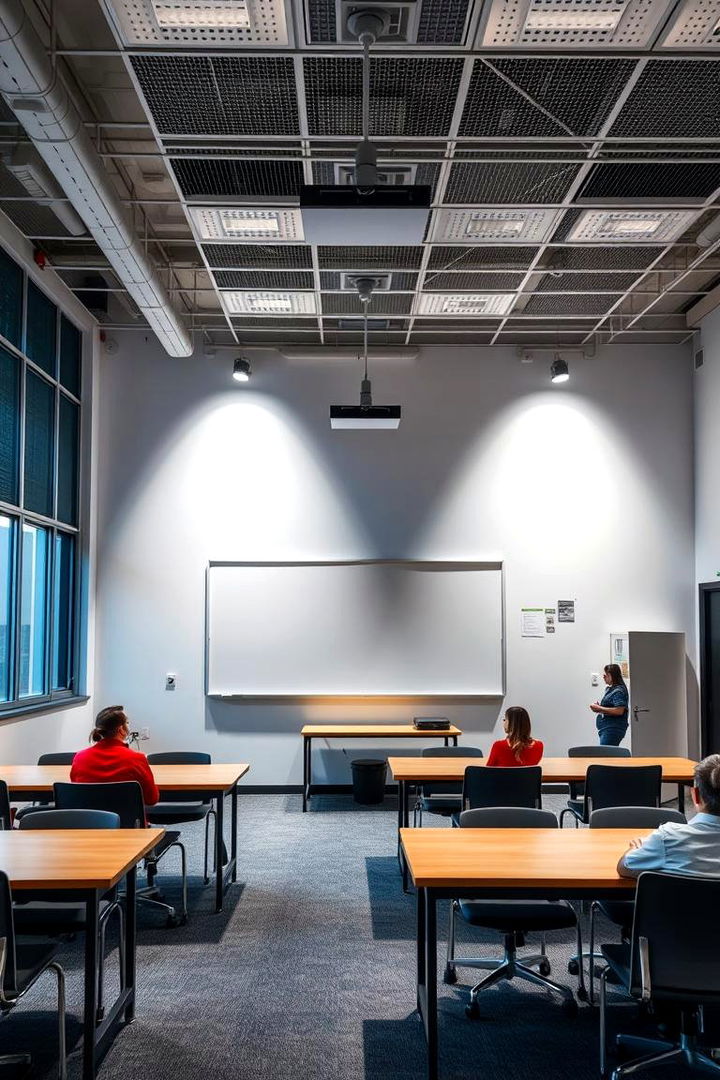
Targeted illumination through localized spotlighting brings focus to key areas within the classroom. Whether highlighting a teacher’s demonstration area or emphasizing student workstations, spotlights can direct attention precisely where it’s needed. This focused lighting helps reduce distractions by ensuring that only designated zones are brightly lit. With flexible positioning and adjustable angles, localized spotlights offer an efficient, customizable solution to suit diverse instructional methods. Their ability to highlight important content or activities makes them an indispensable tool in creating an environment that encourages active participation and concentrated learning.
21. Employ Reflective Surfaces for Amplified Light
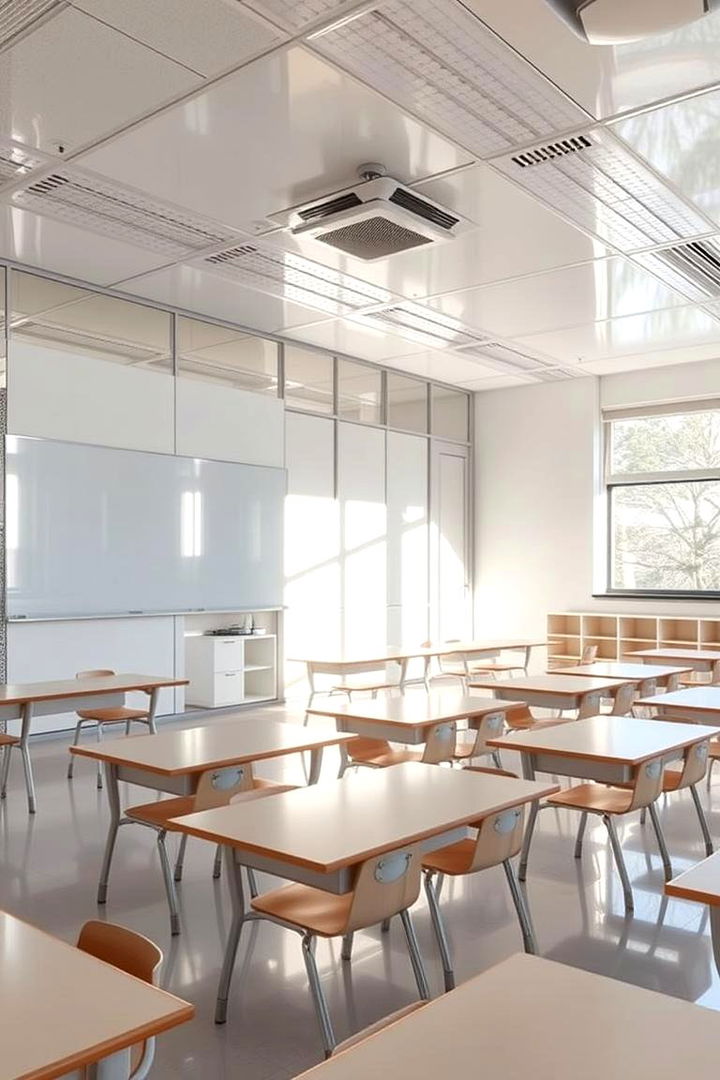
Reflective surfaces play a subtle yet impressive role in enhancing classroom lighting. Strategically placed mirrors or glossy fixtures can bounce natural and artificial light around the room, creating an amplified and even distribution. This technique improves overall brightness while reducing the need for additional light sources. Reflective elements not only enhance visual clarity but also contribute to an open, spacious feel within confined spaces. The use of such surfaces can be both artistic and functional, ensuring that the classroom remains lively and well-illuminated throughout the day—a simple yet powerful design tip for modern educational spaces.
22. Incorporate Modern Technological Lighting Innovations

Modern technological advancements offer cutting-edge solutions that redefine classroom lighting. Integrated systems that blend LED technology with smart sensors and responsive controls bring both energy efficiency and dynamic visual effects into the learning space. These innovations provide precise lighting adjustments based on real-time conditions and user preferences, improving both comfort and efficiency. The result is a futuristic, immersive educational environment that supports a wide range of activities— from digital presentations to traditional lectures. Embracing these innovations ensures that classrooms remain adaptable to the evolving demands of modern education while igniting student enthusiasm.
Conclusion:
Summarizing these comprehensive ideas reveals a world of possibilities for reimagining classroom lighting. By combining natural light techniques, energy-efficient solutions, and advanced technological innovations, educators can create dynamic learning environments that invigorate students and promote efficiency. These ideas seamlessly merge aesthetics with practicality, ensuring every student benefits from a well-lit, inspiring space. Embrace these classroom lighting ideas to transform educational settings into efficient, engaging hubs of learning. Enjoy exploring these transformative concepts for outstanding classroom lighting ideas.
